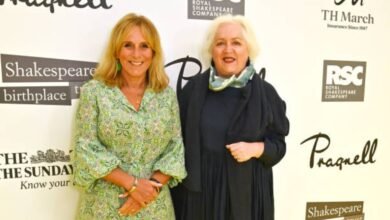Gráinne Hayes: The Private Life and Legacy Behind a Public Figure
When it comes to political figures, the spotlight often falls on their public achievements and controversies. However, behind many prominent personalities stand individuals whose stories remain largely untold. One such figure is Gráinne Hayes, best known as the first wife of British politician Nigel Farage. Though she has maintained a low profile, her life, career, and choices offer a compelling narrative of strength, privacy, and quiet influence. This article delves deeply into Gráinne Hayes’s background, her marriage, and the life she has chosen away from public scrutiny.
Early Life and Background
Gráinne Hayes was born and raised in Ireland, where she trained and worked as a nurse. Details about her early years are scarce, reflecting her commitment to privacy. What is known is that she grew up in a family and culture that valued care and community, attributes that would shape her professional path.
Ireland during the time of her youth was a place of transformation, balancing tradition and modernity. The nursing profession, particularly for women, held significant respect, and Gráinne’s choice to pursue nursing highlights her dedication to service and compassion.
Meeting Nigel Farage: A Turning Point
In the mid-1980s, Gráinne Hayes met Nigel Farage under unusual circumstances. At that time, Farage was recovering from a serious car accident in Orpington, Kent, England. Hayes, a nurse, played a crucial role in his recovery, and what began as a professional relationship soon evolved into a personal bond.
Their connection grew, leading to marriage in 1988. This union marked a significant transition in both their lives. Nigel Farage was then a commodities trader, not yet the political figure he would become. Gráinne’s steady presence provided support during this formative period.
Marriage and Family Life
Throughout their nearly decade-long marriage, Gráinne Hayes largely remained out of the public eye, focusing on her family and nursing career. She and Nigel had two sons: Samuel, born in 1989, and Thomas, born in 1991.
During these years, Nigel Farage embarked on his political journey, eventually becoming a well-known and controversial figure in British politics. Despite this growing public attention, Gráinne maintained a boundary between family life and media exposure.
Balancing the demands of raising children with the evolving challenges of her husband’s career, Hayes’s role was one of quiet strength. She continued her nursing work, underscoring her commitment to her own professional identity.
Divorce and Aftermath
In 1997, after nearly ten years of marriage, Gráinne Hayes and Nigel Farage divorced. The reasons for their separation remain private, as does much about their relationship. This event marked a new chapter in Hayes’s life, one in which she chose to retreat further from the public sphere.
Following the divorce, Gráinne returned to her roots, dedicating herself more fully to healthcare and family. Unlike many public figures’ ex-spouses, Hayes did not seek media attention or public commentary, choosing instead a path of discretion and privacy.
A Life Away from the Spotlight
Since her divorce, Gráinne Hayes has avoided the limelight entirely. There are no public interviews, no appearances at political events, and minimal information about her current life.
This deliberate choice reflects a desire to maintain personal autonomy and distance from the controversies surrounding her former husband. It also highlights a broader theme about the nature of public versus private life—Hayes exemplifies the strength in choosing privacy over publicity.
Despite the lack of public exposure, her story remains of interest due to her connection to Nigel Farage and the insights her life offers into the private realities behind political figures.
Legacy and Public Perception
Though Gráinne Hayes does not seek the public’s attention, her legacy is intertwined with that of her former husband. Nigel Farage himself has spoken sparingly about their relationship, primarily emphasizing his respect for her privacy.
The public perception of Hayes is shaped mostly by this association, but it is important to recognize her as an individual with her own identity—one marked by professional dedication and personal discretion.
Her decision to maintain privacy stands in stark contrast to the often media-driven political world, offering a reminder that not all those connected to public figures choose a public path.
The Broader Context: Women Behind Public Figures
Gráinne Hayes’s story resonates beyond her individual experience. It is emblematic of the many women who support and influence public figures but whose contributions often go unrecognized.
In a media landscape fascinated with scandal and spectacle, Hayes’s quiet presence challenges the narrative. It underscores the importance of respect, dignity, and autonomy for those living alongside the public eye.
Her career in nursing, her focus on family, and her choice to live privately reflect a powerful form of agency that deserves acknowledgment.
Conclusion
Gráinne Hayes remains a figure defined by privacy and resilience. While her name is frequently linked to Nigel Farage, her life tells a different story—one of commitment to service, family, and personal integrity.
Her journey from Ireland to England, her role as a nurse and mother, and her decision to step away from public life offer a compelling portrait of strength away from the spotlight.
In an age dominated by social media and public scrutiny, Gráinne Hayes’s story is a poignant reminder of the value of privacy and the quiet contributions of those who choose to live beyond the public gaze.
For more stories about inspiring individuals leading meaningful lives, visit newleafbyaltintis.



